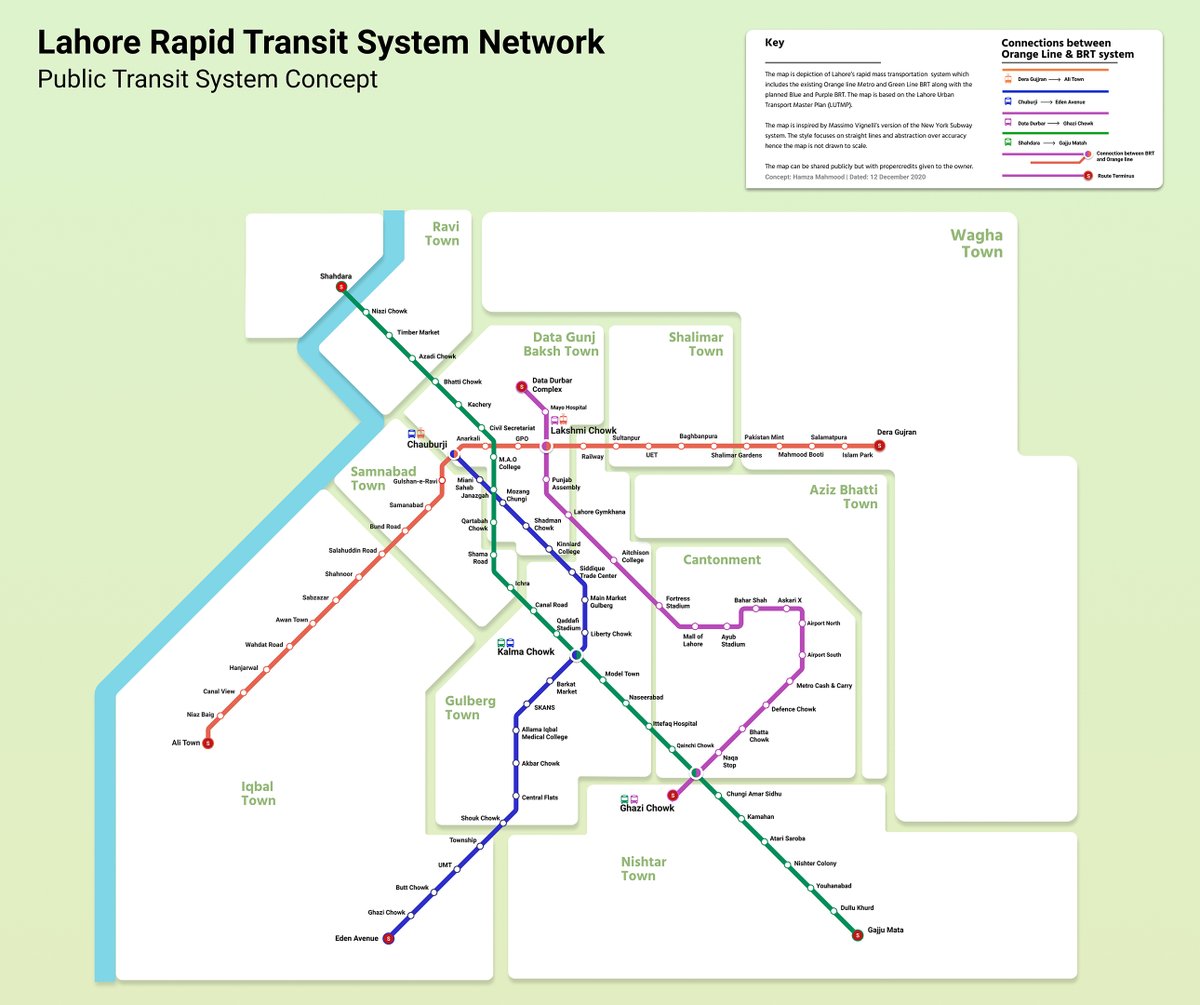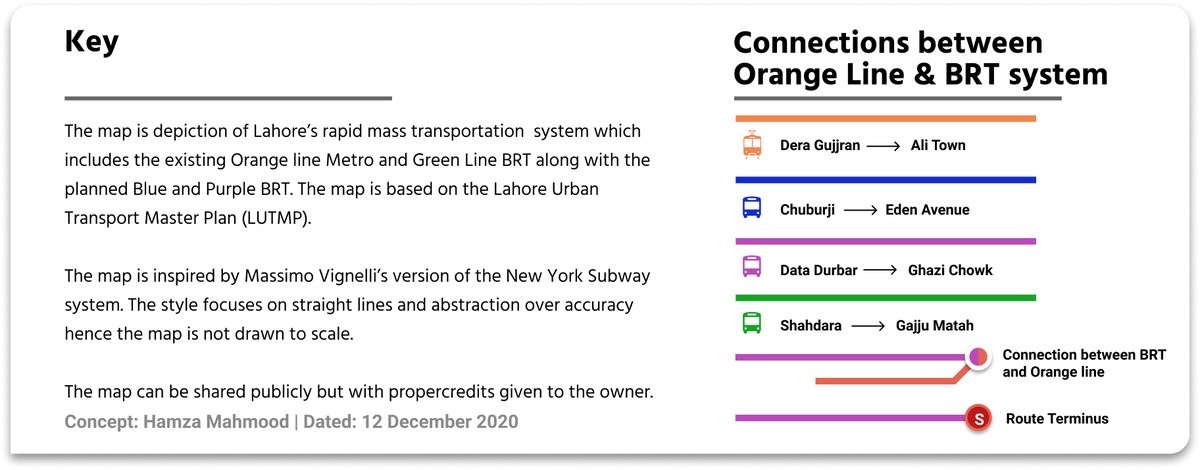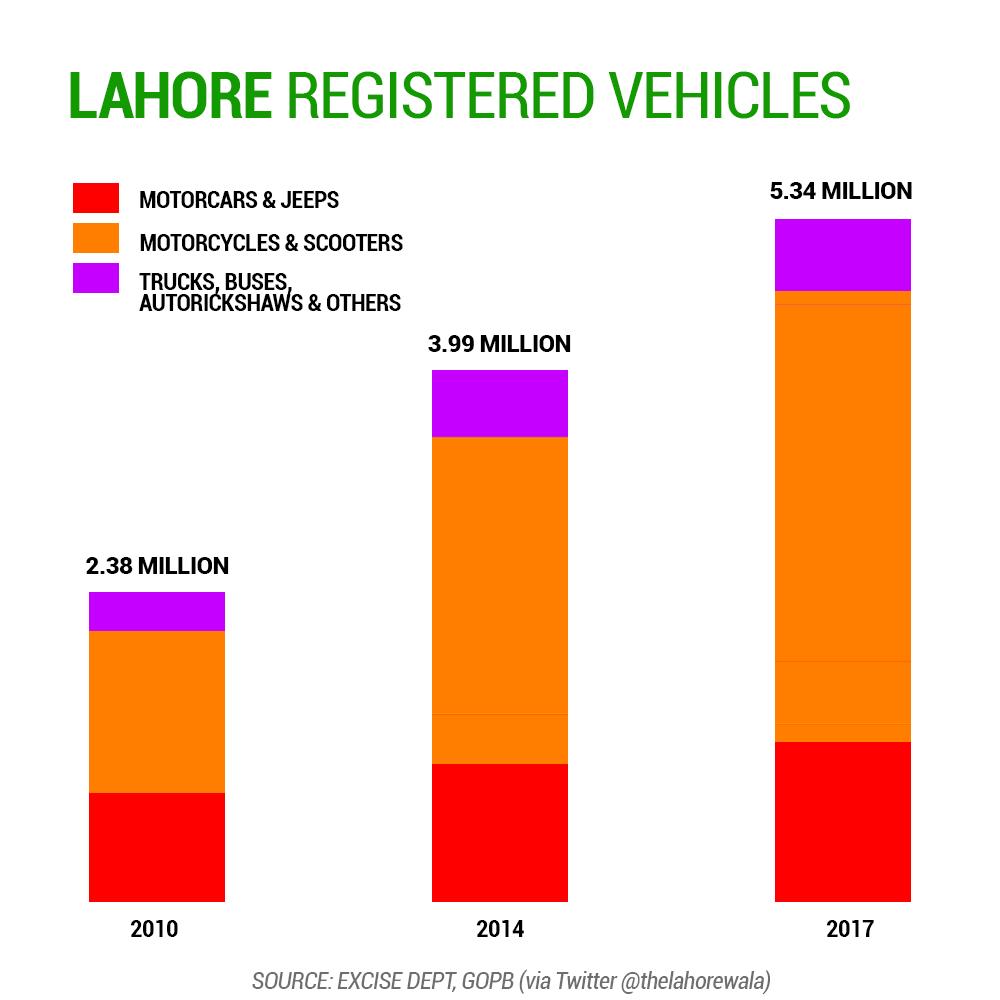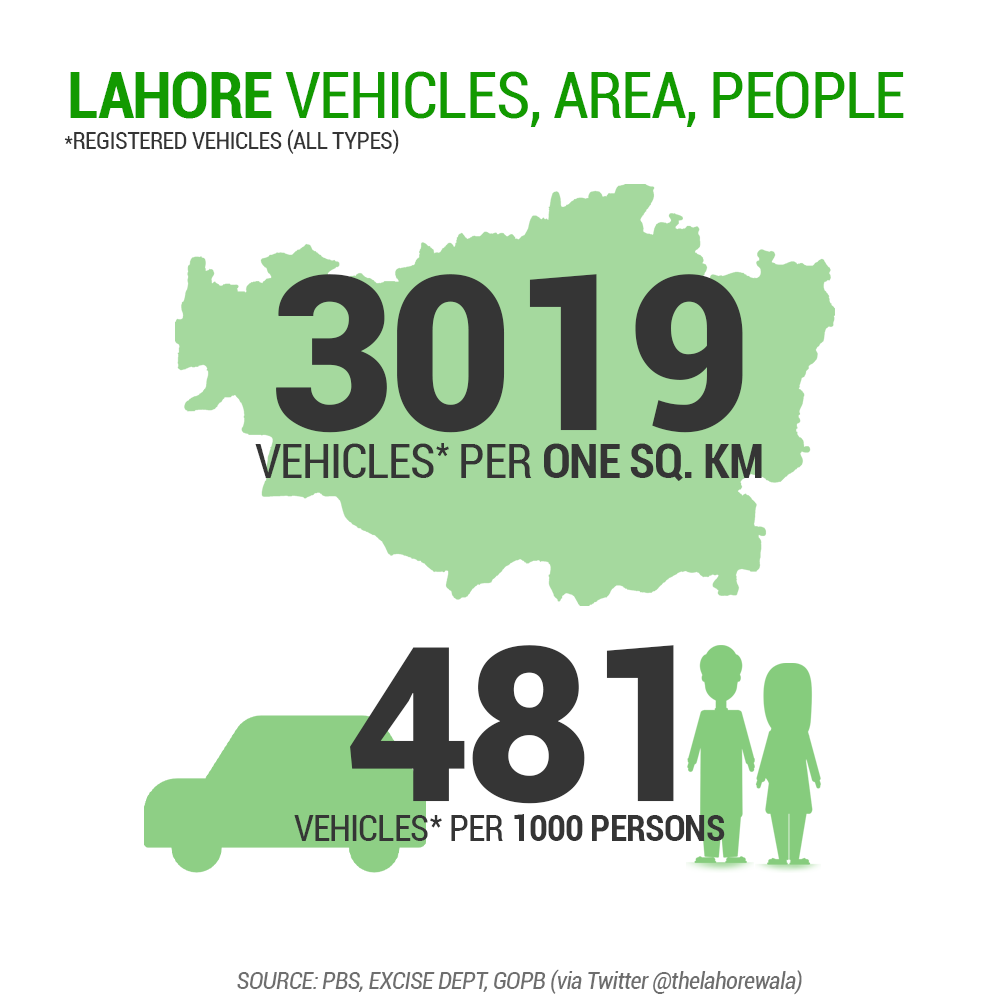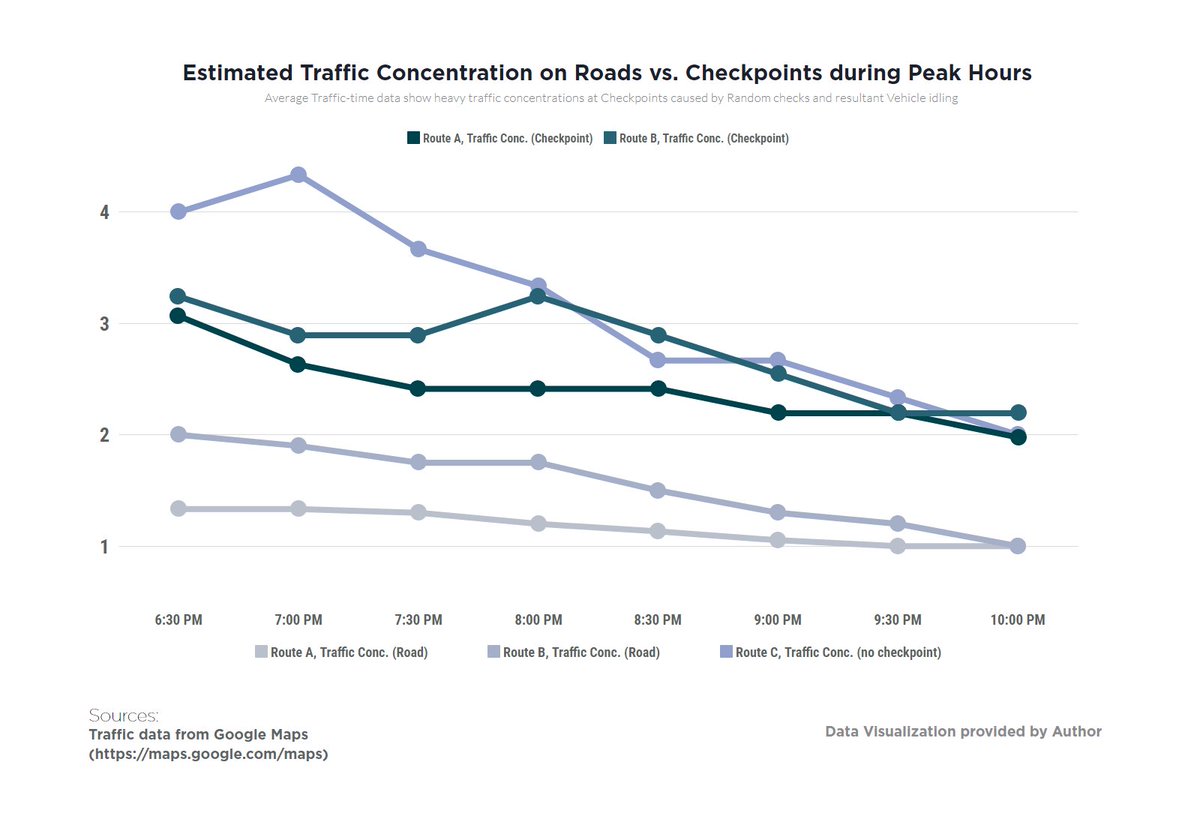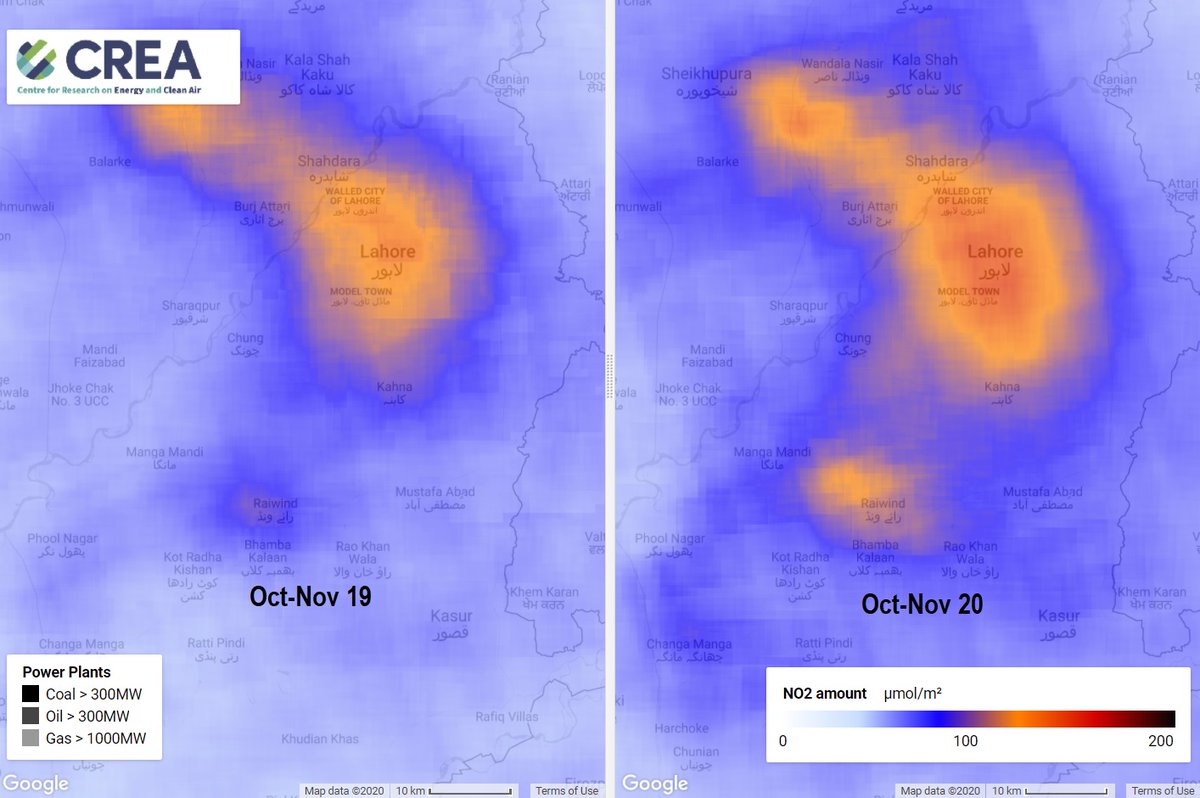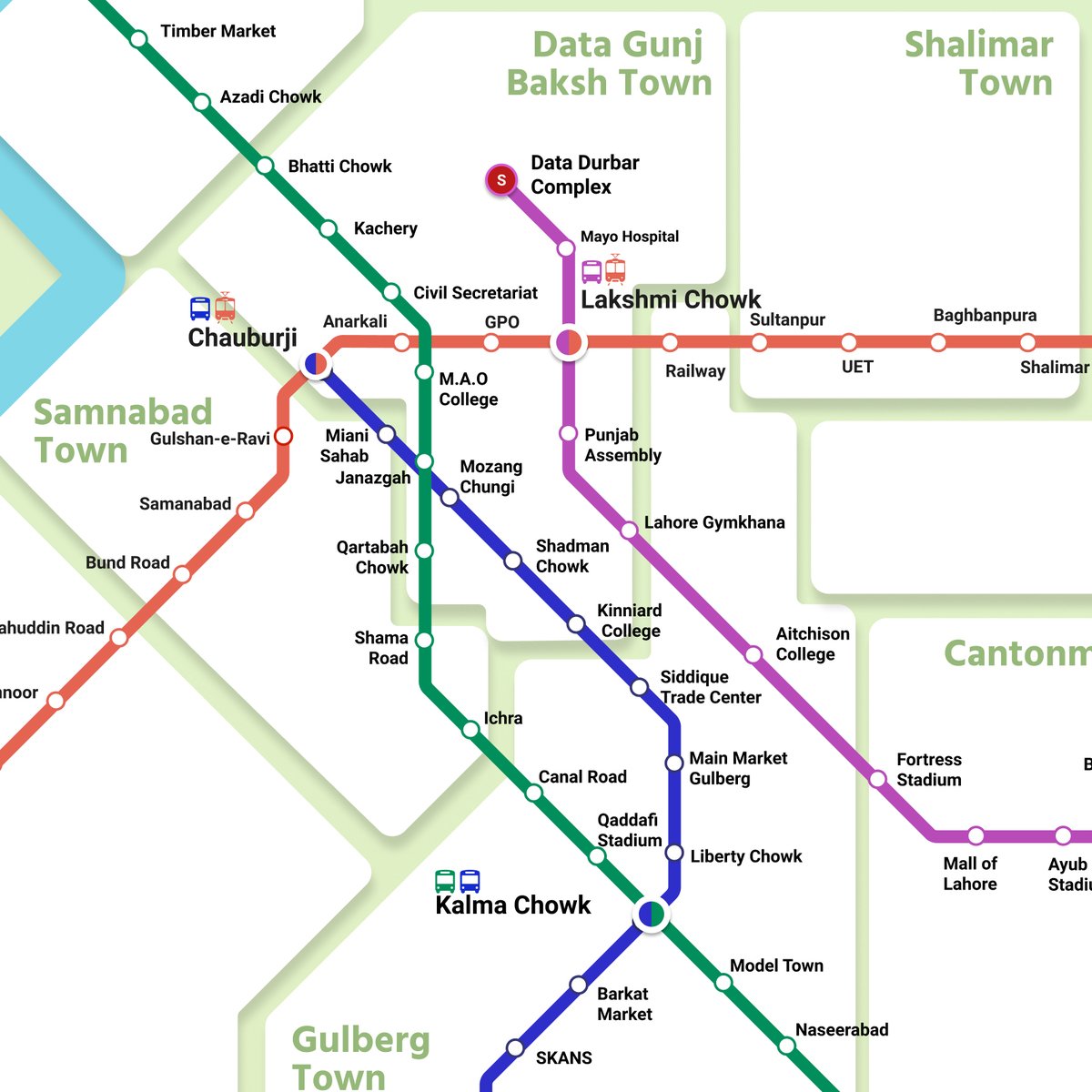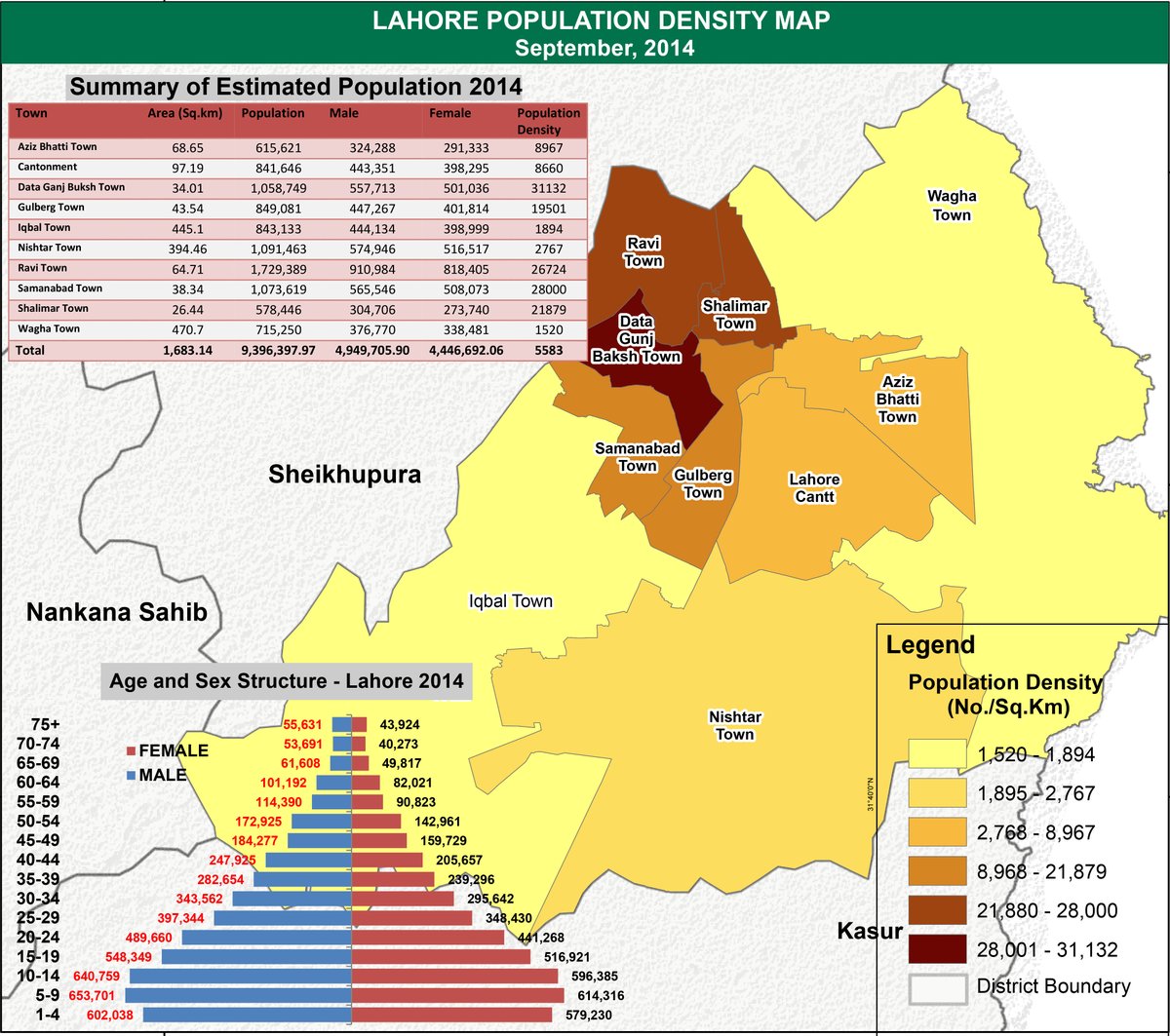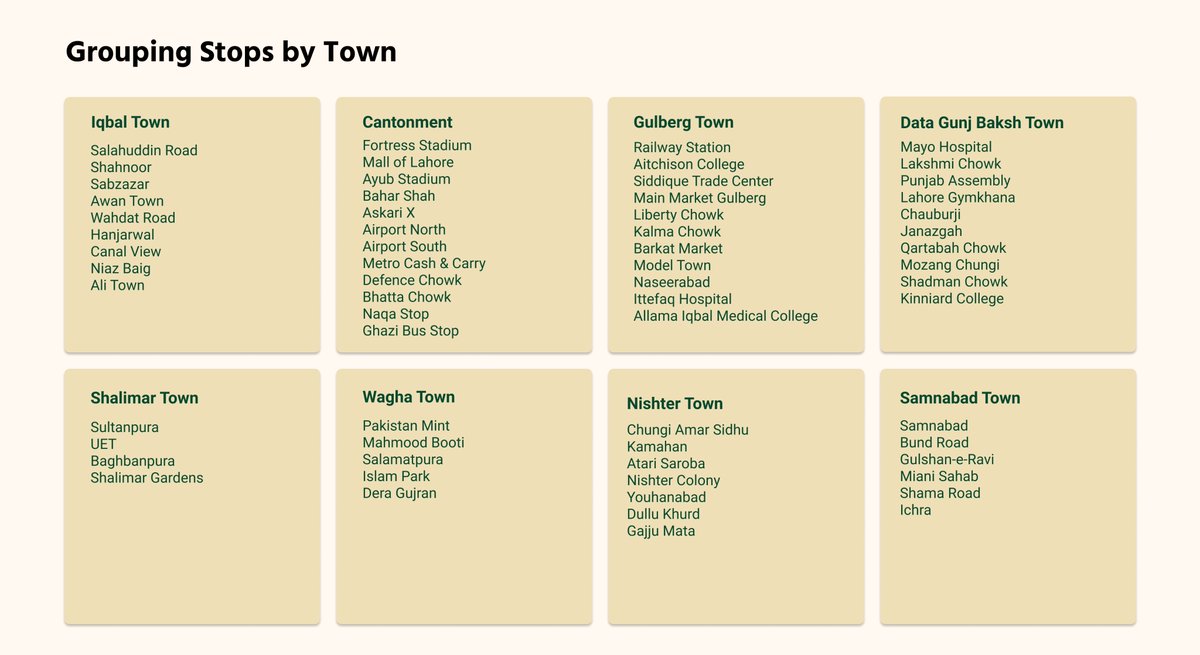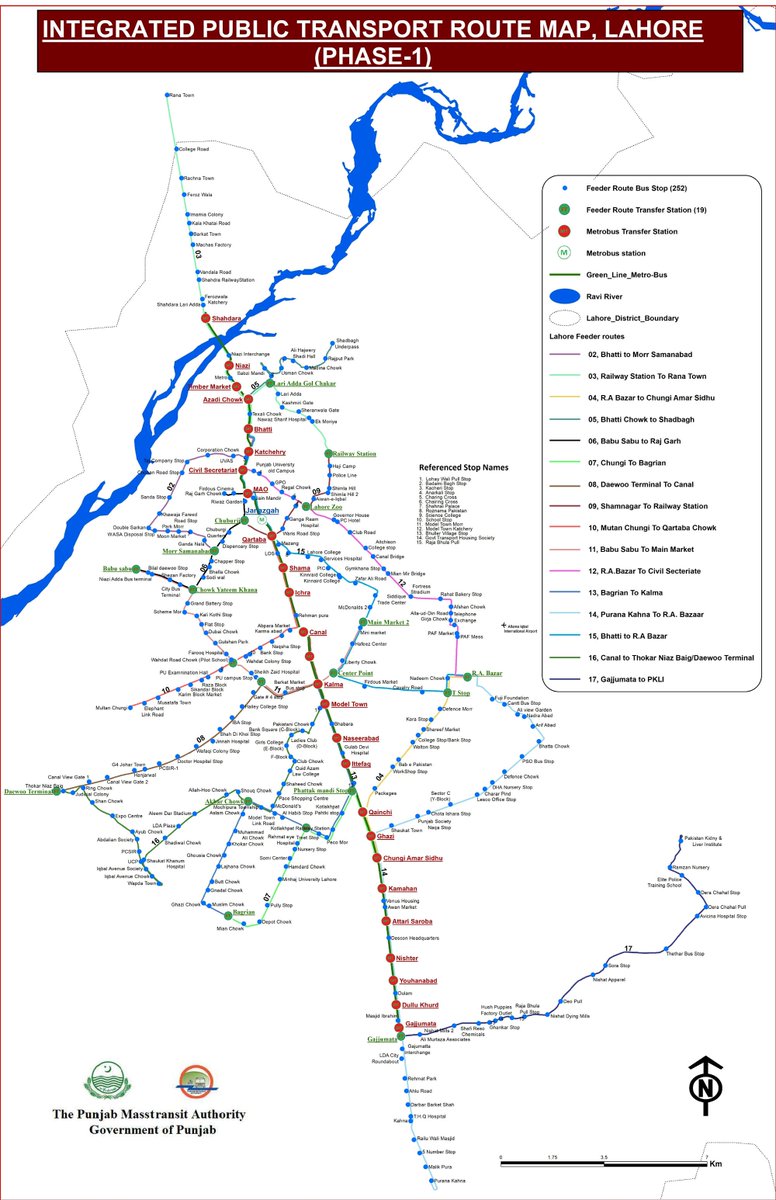Here it is: #Lahore's urban transit, fully illustrated, as proposed under multiple study reports over the years. Credits for the design go to @mahmooyo, who has also detailed the design-thinking aspects in a thread (link below); inspired by @gulraizkhan's Karachi transit ideas.
Hamza ( @mahmooyo) asked me if I knew something like @gulraizkhan's proposal can be made for Lahore, but it didn't need to be as such, because the good folks in JICA had already gone through years of surveys and data to prepare the LUTMP.
There are 3 BRTs and 1 Metro in total...
There are 3 BRTs and 1 Metro in total...
We have ideas to further the LUTMP, beyond the routes. Back to the above map  which uses the Urban transit design-thinking of Massimo Vignelli, and simplifies the unique complexities of urban engineering to make guides people-friendly
which uses the Urban transit design-thinking of Massimo Vignelli, and simplifies the unique complexities of urban engineering to make guides people-friendly  but sacrifices accuracy
but sacrifices accuracy  ...
...
 which uses the Urban transit design-thinking of Massimo Vignelli, and simplifies the unique complexities of urban engineering to make guides people-friendly
which uses the Urban transit design-thinking of Massimo Vignelli, and simplifies the unique complexities of urban engineering to make guides people-friendly  but sacrifices accuracy
but sacrifices accuracy  ...
...
No. 1 concern: Get Vehicles OFF the roads 
No big shocker; there are too many vehicles in Lahore, occupying space + resources these do not deserve/pay enough for.
Car registrations grow at 16% & bikes at 35% per year.
It can be argued that not ALL these are in Lahore (Yes)..

No big shocker; there are too many vehicles in Lahore, occupying space + resources these do not deserve/pay enough for.
Car registrations grow at 16% & bikes at 35% per year.
It can be argued that not ALL these are in Lahore (Yes)..
Many vehicles are only registered in Lahore (usage + resale issues) and may not be in the city. But the assumption applies vice versa too.
No. 2 concern: Lahore's overall roads have not increased drastically. But "Signal-free corridors" and population
and population  has...
has...
No. 2 concern: Lahore's overall roads have not increased drastically. But "Signal-free corridors"
 and population
and population  has...
has...
For example, the Jail Road Signal Free Corridor plan made some assumptions.
It randomly took 5% as the growth rate of all Vehicle types i.e. 1% per year, which as already mentioned above (even if adjusted for errors) is WILDLY OFF the mark.
It randomly took 5% as the growth rate of all Vehicle types i.e. 1% per year, which as already mentioned above (even if adjusted for errors) is WILDLY OFF the mark.

Such "errors" are common in LDA & TEPA proposals, and they trigger a chain of real-world problems.
For example, how Driver behavior is altered; avoiding Mian Mir & Sherpao bridges because of perceived hindrance of checkpoints, resulting in higher Peak traffic on Jinnah flyover.
For example, how Driver behavior is altered; avoiding Mian Mir & Sherpao bridges because of perceived hindrance of checkpoints, resulting in higher Peak traffic on Jinnah flyover.
No. 3 concern: Increasing Vehicles + Poor Management = Higher Emissions = Worsening Smog
The 2020 Smog Season has already broken 2019's record by a considerable margin, with 2 months to go.
NO2 emissions (linked to Vehicles) are visibly dense in central + north-western Lahore..
The 2020 Smog Season has already broken 2019's record by a considerable margin, with 2 months to go.
NO2 emissions (linked to Vehicles) are visibly dense in central + north-western Lahore..
Which is why we come back to the LUTMP Map.
The Orange Line Metro and ALL 3 BRTs
and ALL 3 BRTs  are proposed to precisely serve the central and north-western parts of Lahore, which can no longer cope with more vehicular traffic and emissions...
are proposed to precisely serve the central and north-western parts of Lahore, which can no longer cope with more vehicular traffic and emissions...
The Orange Line Metro
 and ALL 3 BRTs
and ALL 3 BRTs  are proposed to precisely serve the central and north-western parts of Lahore, which can no longer cope with more vehicular traffic and emissions...
are proposed to precisely serve the central and north-western parts of Lahore, which can no longer cope with more vehicular traffic and emissions...
This particular area also happens to be the most densely populated Union Councils in Lahore, and would serve an estimated 6 million people out of Lahore's estimated 11.5 million (2017 Census)..
There are other ways to make the proposed routes even better, for example, Aziz Bhatti TMO has no stops. This is where Feeder Routes come in, like the ones operational along Green-line BRT. Feeder routes are cheap and require no additional infrastructure.
https://pma.punjab.gov.pk/lhr_iptrmp1
https://pma.punjab.gov.pk/lhr_iptrmp1
Lahore needs more and more investment in Urban Transit, which the Metropolitan is fully capable of sustaining itself. In fact, by not having low-cost public transport, we lose out on billions in productivity, and in environmental and public health costs. https://twitter.com/theLahorewala/status/1230084427138641920?s=20
Lastly, kudos again to @mahmooyo for pulling off a design job I considered to complicated to try. Go give a read to his detailed thread on the illustration. https://twitter.com/mahmooyo/status/1338122382356176896?s=20

 Read on Twitter
Read on Twitter